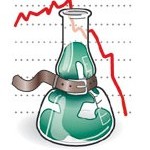
Publications
Spotting a Long-Term Educational Trend: A Master’s Degree with Business Spin
Higher education hasn’t changed much for two centuries, until now… (read more in Nature Medicine).
The landscape of education, especially within the sciences, is continually evolving. As an educational consultant with a deep interest in the intersection of academia and industry, I’ve been particularly intrigued by the rise of the Professional Science Master’s (PSM) degree. This innovative program blends scientific expertise with business acumen, addressing the dynamic needs of today’s job market.
Adapting to Labor Market Needs
Reflecting on the journey of individuals like Brendan Tierney, who transitioned from working in a juice factory to researching antiviral and anticancer compounds, the impact of the PSM degree becomes evident. Brendan’s story is not just about academic progression; it’s about a transformative career shift facilitated by the structured, industry-aligned nature of the PSM program. His success story is a testament to the degree’s potential to bridge the gap between traditional academia and the applied scientific workforce.
The PSM degree, as I see it, is a silent revolution in science education. It caters to a growing segment of students who are keen on applying scientific knowledge in practical settings without committing to the long haul of a Ph.D. The blend of science and management training within these programs is meticulously designed to meet the fast-paced, versatile demands of industry jobs.
From my perspective, the rise of PSM programs signifies a shift in higher education paradigms. Traditional master’s programs have often been viewed as stepping stones to Ph.D. research paths. However, PSM degrees are carving out a new niche, recognizing the value and potential of applied science careers. They offer a pragmatic alternative for students like Dawn Carone and Kali Bogaard, who, despite initial interests in traditional academic routes, found their true calling in the more varied and industry-focused PSM pathways.
What fascinates me about PSM programs is their adaptability and responsiveness to market needs. These programs are not static; they evolve through direct feedback and involvement from the industry. This dynamic synergy between academic institutions and businesses ensures that the curriculum remains relevant, practical, and forward-thinking. However, this does not come without challenges. As Daryl Chubin points out, establishing robust business components in the curriculum demands substantial effort and close cooperation between universities and the industrial sector.
Diversity and Inclusivity in Science Education
The flexibility and diversity of PSM programs are particularly appealing to a wide range of students, including a significant number of women. This is a notable development, as it suggests that PSM degrees are contributing to diversifying the scientific workforce, offering pathways that are not only academically rigorous but also financially and professionally rewarding.
As an educational consultant, I see the PSM degree as a beacon of modern science education. It embodies the principles of effective learning: adaptability, industry relevance, and inclusivity. These programs are not merely academic offerings; they are gateways to fulfilling and prosperous careers in science and technology.
In conclusion, the emergence of the Professional Science Master’s degree marks a pivotal moment in science education. It challenges traditional notions and opens up new avenues for students to engage with science in a manner that aligns with their career aspirations and life goals. As someone deeply invested in the future of education, I am excited about the potential of PSM programs to reshape the landscape of higher learning and empower the next generation of scientists and industry leaders.
The Global Challenge of Pediatric Medication
Medicines for children are big business, but experts like Agnes St Raymond say 50%- 90% of them have not been tested properly … (read more in Nature Medicine).
As an educational consultant specializing in health and science education, I find the issue of pediatric drug development deeply compelling. Recent initiatives by the WHO, funded by the Bill & Melinda Gates Foundation, underscore the urgent need to focus on children’s medication. This move aligns with my advocacy for research and education that prioritize the well-being of all age groups, especially vulnerable populations like children.
Children’s healthcare is a global concern, transcending regional boundaries. The WHO’s investment in pediatric drug development, fueled by a substantial donation from the Gates Foundation, is a significant step towards addressing this challenge. Children in developing countries are particularly vulnerable due to limited access to medicine. This reality drives my commitment to educational initiatives that promote safe and effective treatments for youngsters worldwide
The lack of pediatric-specific data is alarming. Children are not small adults; their bodies process medications differently. Therefore, we cannot simply adjust adult doses based on a child’s weight. This discrepancy highlights the necessity for dedicated pediatric studies. Such research ensures that dosages are safe and effective for every stage of a child’s growth.
The Urgent Need for Tailored Pediatric Studies
The variations in drug effects between adults and children are striking. For instance, medications for conditions like epilepsy and hypertension can have drastically different impacts on children. This difference underscores the importance of specialized pediatric research. My role as an educational consultant involves advocating for such focused studies. I aim to bridge the gap between scientific research and practical healthcare solutions for children.
Adverse reactions to medications can vary significantly between children and adults. Certain drugs, like some epilepsy treatments, may have heightened toxicity in younger patients. This risk further emphasizes the need for age-specific drug development and testing.
Advocacy and Legislation in Pediatric Medicine
My passion for children’s health stems from early professional experiences, where I relied on adult medications to treat pediatric patients. This reliance on insufficiently tested treatments highlighted the need for robust, child-focused research and legislation. The EU Regulation on Paediatric Medicines, enacted in 2007, marked a pivotal shift towards this goal. It mandates that new drugs considered for adults must also be evaluated for pediatric use.
This legislation, balancing obligations and incentives for pharmaceutical companies, fosters the development of pediatric medicines. It also establishes a framework for monitoring and coordinating pediatric drug research across Europe. These regulatory measures are vital for advancing safe and effective pediatric treatments.
Challenges and Opportunities in Pediatric Drug Research
Conducting medical trials on children requires meticulous planning and sensitivity. The paramount concern is safeguarding the young participants from undue risk and distress. As an advocate for ethical research practices, I emphasize creating a supportive, child-friendly trial environment.
Parental apprehension about clinical trials is understandable. However, children in these studies often receive a higher standard of monitoring and care than those treated outside trial settings. This protective aspect of clinical research is crucial to my educational outreach.
The Road Ahead for Pediatric Health
The results of the EU’s pediatric drug legislation are promising. An increase in applications for children’s medicines indicates progress in addressing the gap in pediatric treatment options. Yet, challenges remain, particularly in ensuring market availability of approved pediatric drugs across different countries.
Governments play a crucial role in bridging this gap, ensuring that approved treatments reach the children who need them. My work as an educational consultant involves advocating for policies and practices that support this accessibility. It’s about creating a healthcare landscape where every child, regardless of geography, can access the necessary medicines.
The advancement of pediatric medicine is not just a healthcare issue; it’s an educational imperative. As someone deeply invested in the intersection of education and healthcare, I am committed to promoting research, policy, and practices that prioritize the health needs of children. The WHO’s initiative, supported by the Gates Foundation, is a beacon of hope in this journey. It exemplifies the global effort required to ensure that children everywhere receive the safe, effective treatments they deserve. I aim to continue advocating for these young patients, ensuring they are not overlooked in medicine.
The Breakthrough Promise of Ischemic Protection
Stopping blood flow to the heart is potentially deadly in the form of a heart attack, but new clues suggest there may be some benefits, too… (read more in Nature Medicine).
As an educational consultant specializing in science and health, I am fascinated by the concept of ischemic preconditioning (IPC) and its potential impact on medicine. In my 2009 article “Clues emerge about the benefits of briefly blocking blood flow,” I explored the intricacies of IPC and the role of nitrolinoleic acid (LNO2) in protecting organs during blood flow interruption. This research sheds light on a critical aspect of medical science that could revolutionize the treatment of heart attacks, strokes, and other ischemic conditions.
Understanding Ischemic Preconditioning
IPC represents a paradigm shift in medical science, highlighting the body’s ability to adapt to ischemic stress. Since its discovery in 1986, IPC has intrigued scientists with its protective mechanism against severe oxygen and nutrient loss. The process involves brief, controlled interruptions of blood flow, which somehow fortify the cells against future ischemic events. This concept has been tested in clinical settings, like open-heart surgeries, showing promising results in reducing tissue damage.
The mystery of how IPC works leads to fascinating research avenues. One study on rat heart cells identified LNO2, a fatty acid compound naturally forming in mitochondria during blood flow loss. Remarkably, LNO2 has shown the potential to protect cells from damage when the blood supply is interrupted and then restored. This discovery points to LNO2’s protective effect, even in small quantities.
Exploring the Molecular Mechanisms
The journey to unravel how LNO2 functions in IPC is ongoing. By tagging a synthetic version of LNO2, researchers tracked its interaction with specific mitochondrial proteins. These proteins, involved in mitochondrial uncoupling, redirect energy from ATP production to heat generation. This uncoupling process, intriguingly, might safeguard mitochondria from oxidative damage by free radicals.
Further studies link mitochondrial uncoupling proteins to neuronal protection during strokes, where increased protein levels in damaged brain areas suggest a natural defense mechanism. These insights align with the hypothesis that LNO2 and similar compounds could signal pathways preventing cellular damage.
However, the translation of IPC from experimental models to clinical practice faces challenges. The complexity of the underlying mechanisms and the variability in patient responses necessitate more research. For instance, factors like diabetes, beta-blocker use, and age can affect IPC’s efficacy. Understanding these nuances is crucial for developing targeted, effective treatments.
Bridging Research and Clinical Practice
As an educational consultant, I see the journey of IPC and LNO2 research as an exemplary model for science education. It demonstrates the iterative nature of scientific discovery and the critical need for multidisciplinary collaboration. Educators should incorporate these case studies into curricula to inspire future scientists and healthcare professionals. It’s essential to show students the real-world implications of basic research and the long road to clinical application.
Moreover, this research underscores the importance of continued investment in science and healthcare education. By fostering a deep understanding of biological processes and research methodologies, we can prepare the next generation of scientists to tackle the pressing medical challenges of their time.
The exploration of ischemic preconditioning and nitrolinoleic acid represents a frontier in medical research with significant potential for patient care. As science unravels the complexities of these mechanisms, the prospect of protecting vital organs from ischemic damage becomes increasingly tangible.
In conclusion, the work on IPC and LNO2 is a beacon of hope for advancing medical treatment. It also serves as a vital educational tool, illustrating the profound impact of scientific discovery on human health. As an educational consultant, I am committed to highlighting these advancements and fostering a culture of curiosity and innovation in the field of healthcare education.
A Job Hunting Survival Guide for Emerging Scientists
Hiring freezes cause fear among young scientists, but there is a silver lining.. . (read more in Nature).
Navigating the Postdoctoral Job Market
The current economic climate paints a rather bleak picture for job seekers, especially in the postdoctoral realm. The downturn has not only heightened competition but also created a precarious landscape for young scientists. With budgets shrinking, the already competitive postdoctoral job market has become even more challenging. As an educational consultant specializing in workforce development, I’ve seen the impact firsthand: job openings evaporate, and once-stable opportunities become uncertain.
Marc Kastner, the dean of the School of Science at MIT, shares a common concern, noting the dramatic and rapid changes in the job market. The situation is worrisome, with hiring freezes becoming more frequent. Roger Davies from the University of Oxford highlights the uncertainty, suggesting that the true extent of the job market contraction will only be known in the coming months. This uncertainty necessitates a strategic approach to job hunting and career planning.
Exploring New Horizons
Despite the grim outlook, not all is lost. There are sectors where opportunities still exist, and sometimes, the key is to look beyond traditional paths. The European Space Agency, for instance, has maintained its budget, offering some stability within the space science sector. This serves as a reminder that certain areas continue to invest in talent and research, even in tough times.
The challenge many postdocs face is considering a shift, either within their scientific domain or beyond it. Clare Jones, a careers adviser, suggests that this might not be the best time to switch fields completely. Instead, exploring adjacent areas or roles that can leverage one’s existing skills could be a more prudent strategy. With more candidates, including those with MBAs, entering the job market, the competition is intensifying. Yet, for those who persevere, like the virology postdoc who explored consulting roles, opportunities can emerge.
Creative job searching, as Jones recommends, involves leveraging networks and keeping an eye on internal opportunities. Transitioning into roles like scientific management or business development within one’s current institution can also offer new career avenues. European companies, for example, are still in need of qualified scientists for consultancy roles, highlighting the demand for expertise in niche areas.
In these turbulent times, extending current postdoctoral positions or seeking extensions can provide a temporary safe haven, allowing for a more deliberate and focused job search. Ryan Wheeler from the Scripps Research Institute advises using any additional time to reflect on personal career goals and values, which can help in navigating the job market more effectively.
The economic downturn has undoubtedly tightened the job market, but it also compels us to broaden our horizons and be more strategic in our career planning. As daunting as it may seem, understanding our strengths and interests, coupled with a proactive and creative job search strategy, can open doors to unexpected opportunities. The journey might be longer and more challenging, but with resilience and adaptability, we can navigate these uncertain times and find fulfilling career paths.




